Written by Maximilian Jany
Photographs by Gastone Roulstone
The Clone is a real mans marker, a marker made in the land down under, where there is no place for wimps and sissies. This is a marker that is good enough for the team that comes out of the former Soviet Union, the one and only Russian Legion. But they are not the only team that is currently using them in major tournaments around the world, but they are the biggest name.
For many players Macdev is still a foreign name and they have no idea who they are. So here is a quick history lesson, Macdev is an Australian company whose roots date back to 1969 when they were founded in Sydney as an engineering firm, in the mid 90’s they developed and produced the first all aluminum compressed air tank. Then in 2003 they developed the Cyborg which was released as the 04 Cyborg. This paved the way forward for Macdev as a manufacturer of high-end markers and then in 2007 they released the Droid, which was their first spool valved marker and the platform from which the Clone developed of in 2009.
But once again they have worked their Ozzie magic and they have given us the 2011 Clone VX. This is an improved version of their original platform, with changes and improvements to the regulator, the feed neck, the drive, the electronics and of course some new colours.
Some basic info:
Length (without barrel): 21,6cm
Height: 20,5 cm
Weight: 880g (including barrel and battery)
Barrel: Shift barrel System (Cocker thread)
Operating pressure: 100psi
Air source: strictly Air or Nitrogen only
Lube: Macdev Militia lube
Battery: Standard 9v battery
Manual: English (Full colour)
Vision Eye: Break Beam Laser red
Firing modes: 10 (Australian version, Semi only)
Height: 20,5 cm
Weight: 880g (including barrel and battery)
Barrel: Shift barrel System (Cocker thread)
Operating pressure: 100psi
Air source: strictly Air or Nitrogen only
Lube: Macdev Militia lube
Battery: Standard 9v battery
Manual: English (Full colour)
Vision Eye: Break Beam Laser red
Firing modes: 10 (Australian version, Semi only)
Like with most high-ends, you expect it to come with a nice case and Macdev haven’t held back in any way or form in this regard. They have given the Clone a hard fabric zip up clam shell case, that is flexible enough so that it doesn’t bend or break, but still robust enough so that it will protect your Clone from the likes of rough baggage handlers when you travel, to the ride to the field in your kit bag. Once you zip it open, it reveals the two piece Shift barrel, a tool tube with all the hex keys that you will need for general maintenance, a packet of spares and a colour manual. Then there is a soft fabric divider that protects the marker from being scratched by a rouge tool and once flipped it reveals the Clone and a small tube of Militia lube. All of this is held firmly in place by rigid foam that is molded to fit the marker, barrel and tools.
Now, aesthetically the Clone might not be every ones cup of tea, but then again neither is the AK-47 and that is exactly what I would describe the Clone as. A stamped out rugged mans gun, something that looks like it can take a beating, but still work 100% when you need it too. But aesthetics do not hold any performance values at all and sure it’s nice to have a marker that could only be described as looking like a gorgeous super model and not the super models nerdy assistant, but it’s not the end of the world and the Clone is actually not bad looking at all.
The feed neck is one of the things that Macdev has improved upon from their original Clone, as they seemed to have had issues with them in the past.
But so far so good with the new VX feed neck, and quite frankly there isn’t much that companies can do any more with the design of their feed necks. But Macdev has made their feed neck super easy to use and you don’t need any tools to adjust it like some of the other feed necks being used by other manufactures. As we all know that those feed necks with a hex key screw, wheel or knob don’t work well and at best, drive the user totally insane after a while. So the feed neck does its job and does it without causing any irritation to the user and that’s exactly how it should be as it is just a feed neck.
The ASA can only be described as a spinoff of the Angel ASA and there is nothing wrong with that as they have an awesome design. It’s a simple screw in design with the macro line coming out the front and it seems that a lot of manufacturers are following suit. Now this is not only a cleaner look, it is also more comfortable than those with the macro line either on the left or right side of the ASA with a 90degree fitting. So not only does it look good and feel comfortable when you change hands, it also works great with a smooth action when pressurizing and de-gassing your Clone VX. Plus it has a big ASA cap, unlike some other ASA’s where they made them as small as possible, making life harder for those with slightly bigger fingers. But the Clone VX’s one is big finger friendly, so no issues there if you are someone who worries about that.
The Clone comes with an OLED (organic light emitting diode and apparently pronounced “oh-led”) board with a USB port so that you can do your own updates. Now the display and menu interface looks and feels very much like a Tadao Yakuza board and it is said that the guys from Tadao help with the boards and code, and that is great as they have an awesome interface. But Macdev have their own code and they added their latest version to the Clone VX and the Militia 2.0 has everything that even a seasoned player will need. But for those who love to tinker and want that little bit extra adjustability, there is always the option of having your board flashed by the guys from Tadao for $35, this allows you to use the Tengu USB interface and add your own custom boots screens.
But the Clone comes stock with “laser” eyes, which are just the normal break beam eyes but with a coloured led and the standard receiver, so that you can check if your eye’s are working when you check down your breach.
The barrel is the same 14” Shift barrel that came with the original Clone and there was no reason to change it with the VX. Now for those of you, who are only now finding out about Macdev while reading this review, would never have heard of their previous barrel kit the Matchstik. The Matchstik barrel was an awesome barrel that came with different tips and different sized backs and was at the top with the likes of the CP barrels and the Dye barrels. However the Shift is a bit different as it is a two piece barrel that takes specially designed inserts, much like the Freak kit or Deadly Winds barrels. My only complaint is that it doesn’t come with the kit and only comes with a single .691 insert and for today’s paint it’s a bit big.
But Macdev have an insert kit that you can buy with four inserts; .681, .685, .689 and .693 and a plastic tool that is actually completely useless, but expect to pay $99 for these four inserts.
The trigger is a three point adjustable spring return roller bearing trigger, with a shape similar to what we see on the DM and the NT. The trigger like on all high-end markers has very little side to side play and a very smooth pull. There have been people who have said that the Clone trigger isn’t great for semi play, but luckily there are companies that make aftermarket triggers to accommodate those with this view. But there is another thing that might bother a few people and that is the fact that the spring for the tension is a bit soft and this means if you like a nice stiff trigger pull, you won’t find it with the stock spring. But that is easily fixed by finding and installing a harder spring.
The Drivetrain or bolt assembly joins an elite few spoolies with the fact that the bolt can be removed without the use of any tools, but that is where the easy maintenance stops. The bolt assembly probably has the most amount of o-rings on any high-end spoolie out there on the market. So make sure you pick up a set of spare o-rings as there are loads of them that will need replacing and Macdev haven’t exactly added a huge amount to the spares kit. But on the plus side, you can run the marker for quite a while before you need to remove the drive and service it. Now on the v1 and v2 drives in the old Clone, people complained that there was a bit of o-ring shredding going on, but thankfully the guys at Macdev have managed to sort this issue out and the VX drive is backwards compatible with old Clone.
They also use rubber detents similar to those found on the Eclipse markers, which is a smart move as a lot of the paint that we see on the market today is getting smaller. The rubber detents stick out further in the breach then those delrin detents. Macdev also added their all popular gold bolt stock to the new VX is was a huge hit for the original Clone. Then they have also redesigned the end cap making it easier to grip when trying to remove the drive from the marker.
And finally we get to the VX Gladiator regulator, which is an upgraded version of the popular Gladiator regulator that we have seen on Macdev markers from yesteryear. The new version is designed to be much simpler in order to make maintenance a lot easier for the everyday player. Also they have reworked the internal workings of the regulator in order for it to have a higher flow rate and this means it can deliver a more consistent shot than ever before.
First off the marker is not as uncomfortable as people have made it out to be, the spacing between the trigger guard and the regulator is much bigger than some other markers, which is great as it makes holding it a lot nicer and they gave it a nice big trigger guard, once again catering for those who have big fingers.
The actual grip frame won’t win any prizes for comfort, but it’s not too thin and not to thick, so it’s actually quite nice to hold and won’t bother you if you have smaller or bigger hands like other grip frames.
So first impressions are quite good for the 2011 Clone, but the proof is always in the pudding and with that, we took it to the field to put it through its paces.
First off we threw it over a chrono to check the velocity and consistency using Gelcaps Ignite tournament paint and a .689 insert in the barrel.
First shoot was 284fps, so we decided to leave it for the consistency test and these are the figures we got:
1.289fps
2.286fps
3.281fps
4.281fps
5.281fps
6.278fps
7.282fps
8.284fps
9.281fps
10.279fps
2.286fps
3.281fps
4.281fps
5.281fps
6.278fps
7.282fps
8.284fps
9.281fps
10.279fps
These aren’t bad figures for a marker that has not even been broken in yet, as once it is broken in, it will become even more consistent.
Now Macdev claim that you should get about 1700 shots off a full 68/4500psi tank and the figures we recorded were a bit lower, but that is to be expected as it’s still a new gun. Once it has seen a lot more paint it will start reaching that magic number of 1700 shots. But even what it got was a lot better than most spoolies straight out of the box.
From a playing point of view the VX is amazing, super smooth out of the box, quiet for those who seem to have an issue with loud markers and very responsive making it great for gun fighting. It shoots with a very flat trajectory like you would expect from any high-end spoolie.
So to end it off, this marker deserves its $1200 price tag as it’s a platform that delivers great performance, solid finish and a full package with everything that you look for in a high-end marker.



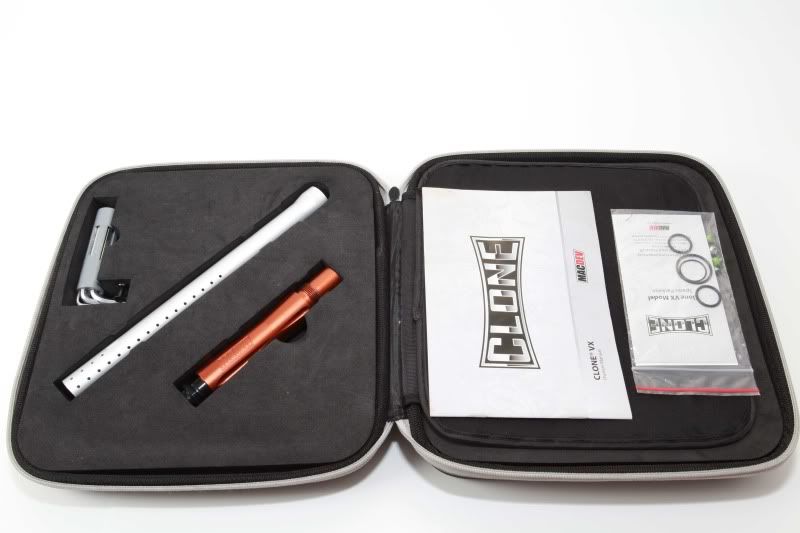

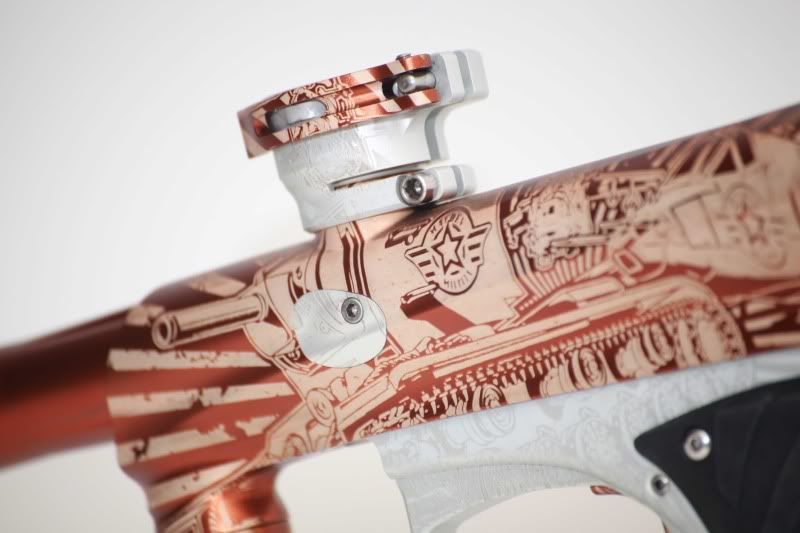

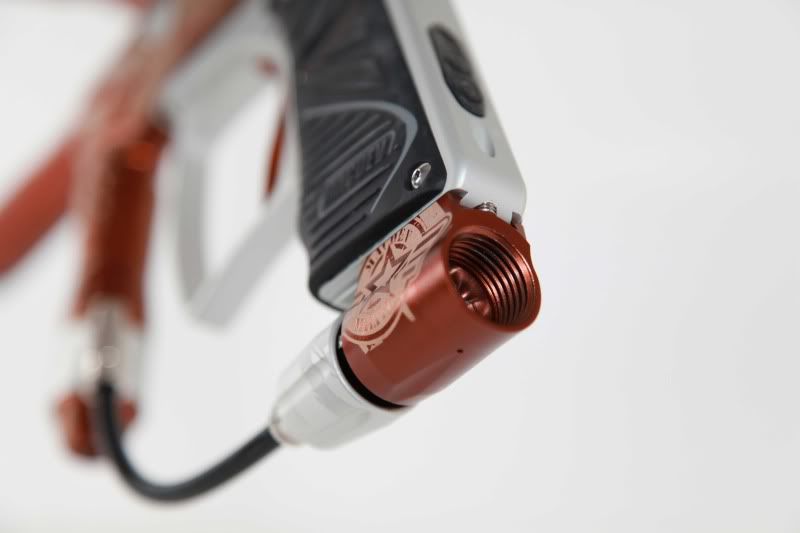
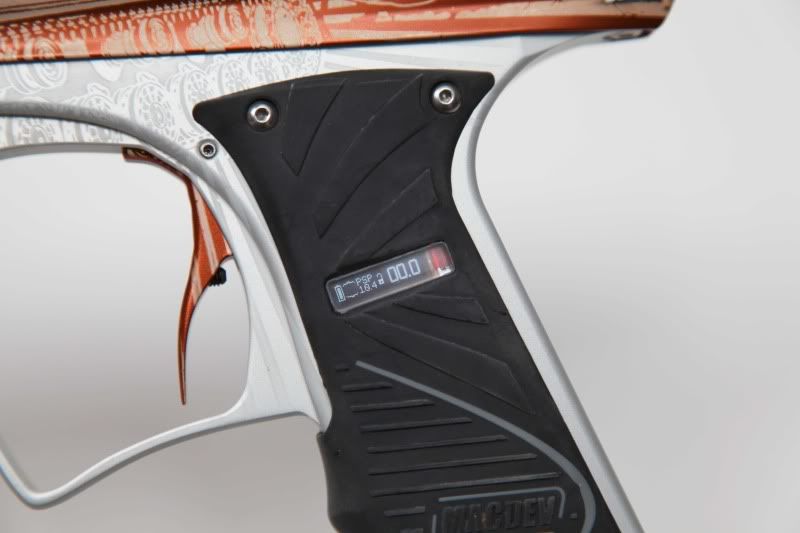


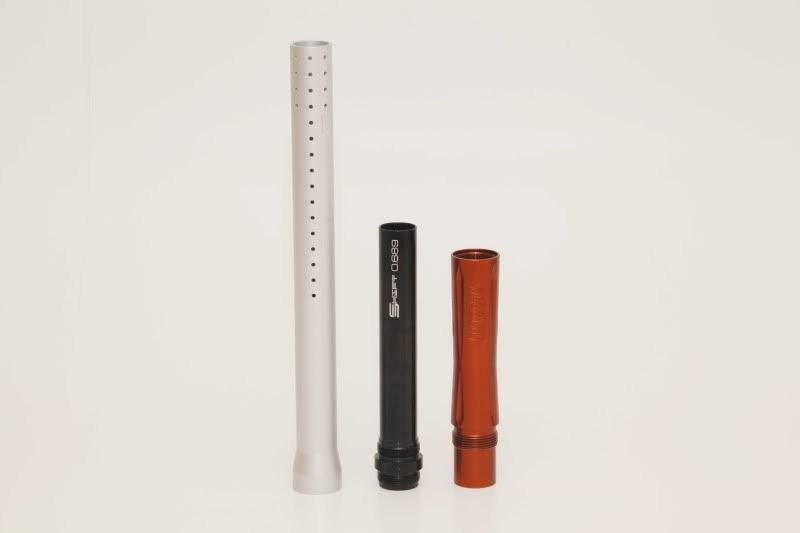
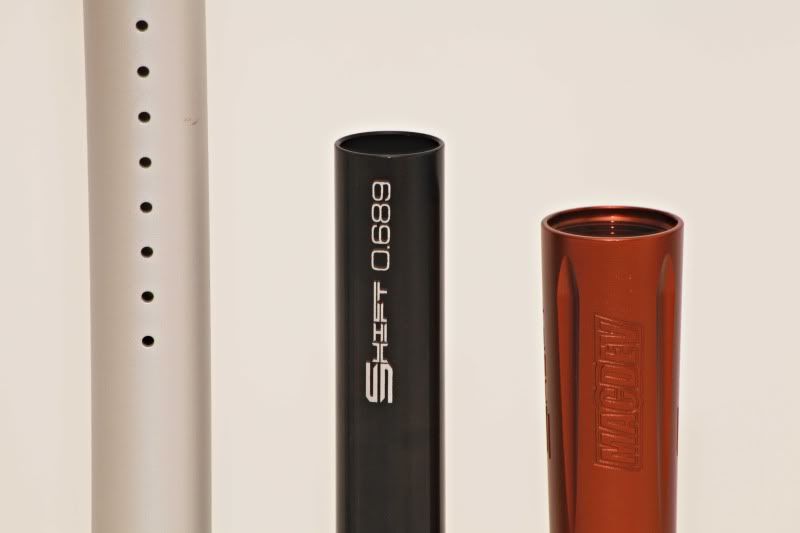
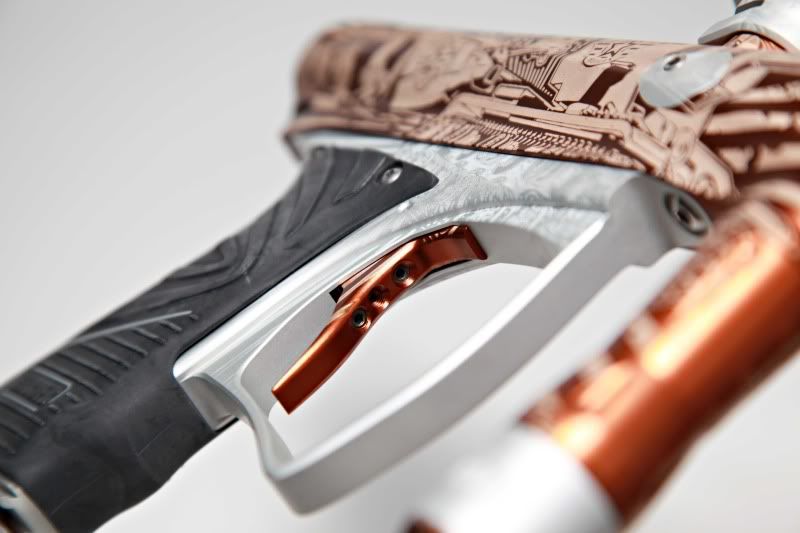
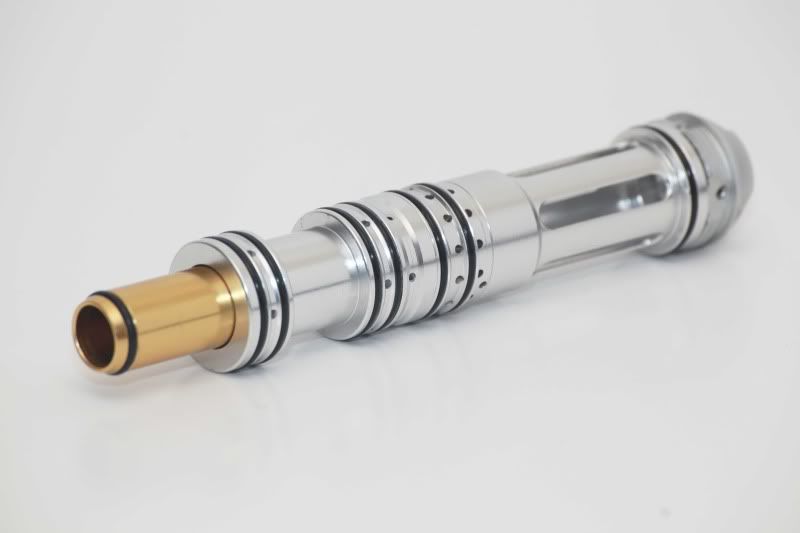
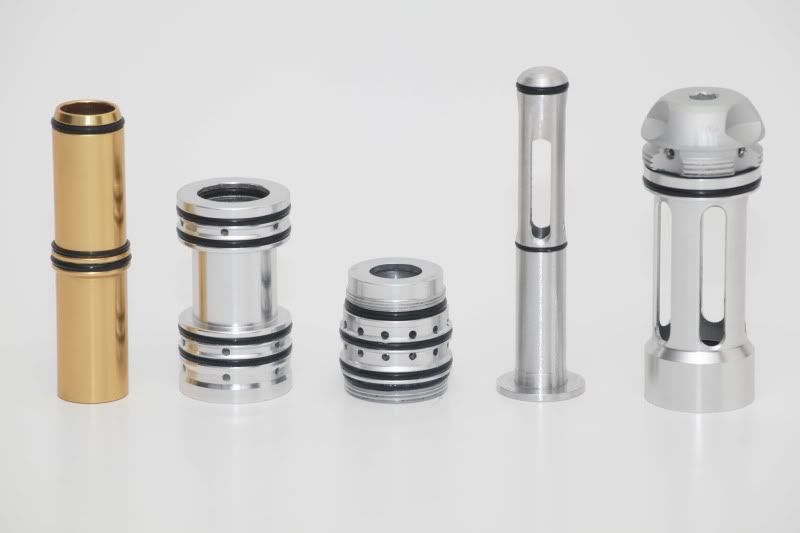

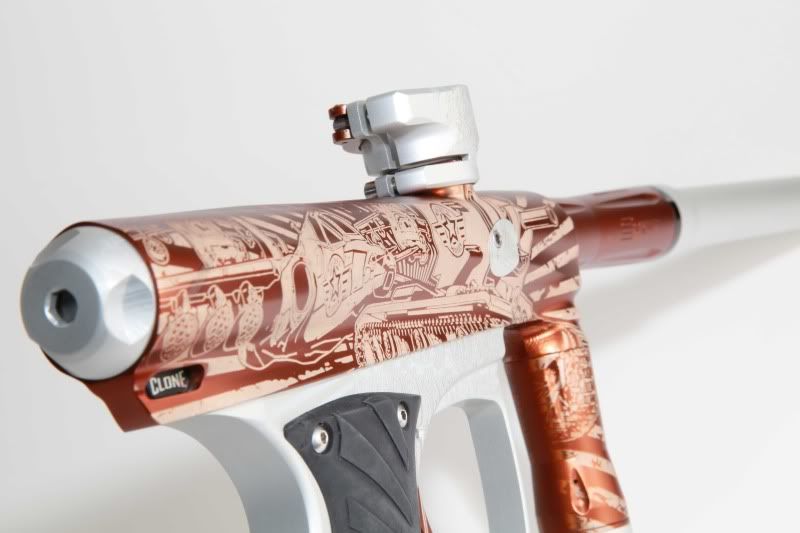

No comments:
Post a Comment